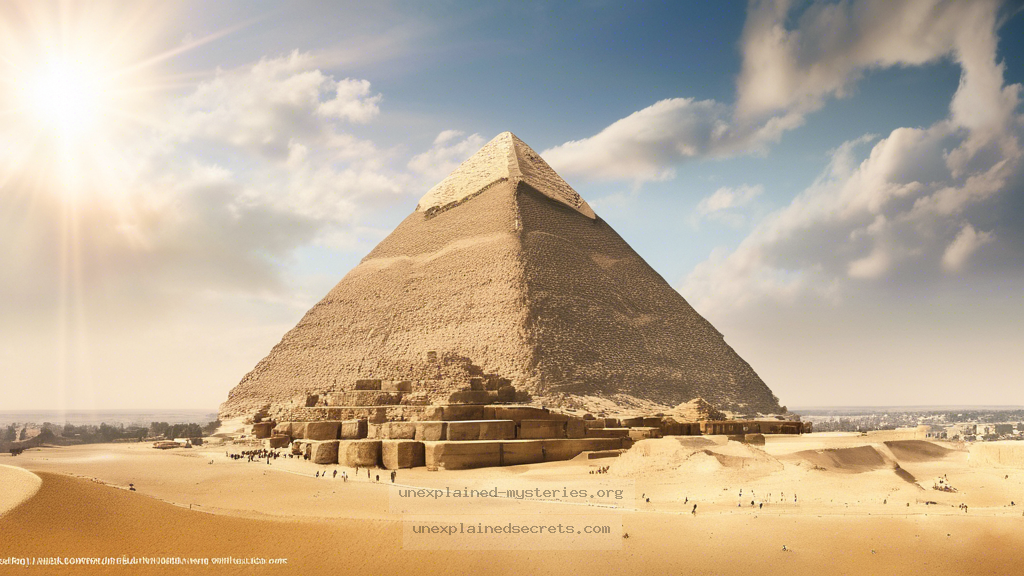What Secrets Lie Within the Pyramids of Giza That Have Yet to Be Uncovered?
What Secrets Lie Within the Pyramids of Giza That Have Yet to Be Uncovered?
The Pyramids of Giza, particularly the Great Pyramid, have captivated humanity for centuries. Despite extensive research and exploration, many questions about these ancient structures remain unanswered. Why do they align so precisely with the stars? What advanced technologies did the ancient Egyptians possess? And, perhaps most intriguingly, what secrets lie within their stone walls that have yet to be uncovered? This post delves into these mysteries, exploring historical contexts, core concepts, and ongoing research efforts that continue to reveal the enigma of the Pyramids of Giza.
Historical Context of the Pyramids
The Pyramids of Giza, built during the Fourth Dynasty of the Old Kingdom of Ancient Egypt, represent one of the most significant achievements in human history. Constructed around 2580–2560 BC, the Great Pyramid was originally 146.6 meters tall, making it the tallest man-made structure for over 3,800 years. These pyramids served as monumental tombs for pharaohs, believed to be a crucial element in their journey to the afterlife.
Ancient Egypt was a civilization rich in culture, religion, and technological innovation. The construction of the pyramids required not just a vast labor force but also advanced knowledge of mathematics and astronomy. The alignment of the pyramids with celestial bodies suggests a deep understanding of the cosmos, which raises questions about the knowledge and techniques of the builders.
Theories Surrounding the Construction Techniques
The methods used to construct the Pyramids of Giza remain a topic of debate among historians and archaeologists. Traditional theories propose that large blocks of stone were quarried and transported using sledges and ramps. However, the exact logistics of moving and placing these massive stones have not been definitively proven.
Some alternative theories suggest that the ancient Egyptians might have used a form of advanced technology that has been lost to time. For instance, the concept of using water to reduce friction during transportation has been proposed, alongside theories of leveraging simple machines. These ideas challenge the notion that the construction was purely reliant on brute force.
Unexplained Discoveries in the Pyramids
Despite much exploration, several unexplained discoveries have emerged from the Pyramids of Giza. One of the most significant is the presence of voids within the Great Pyramid, detected using advanced scanning technologies like muon tomography. These voids, which could represent unknown chambers, hint at further secrets waiting to be uncovered.
Another notable discovery is the 2017 finding of a hidden chamber in the Great Pyramid, referred to as the “Big Void.” This chamber remains unexplored and raises questions about its purpose. Could it be a burial site, a storage area for artifacts, or perhaps a structural element designed to relieve weight from above? The lack of access to this chamber means it remains shrouded in mystery.
The Astronomical Alignments
The precise alignment of the pyramids with stellar constellations, particularly Orion’s Belt, has fascinated scholars. The ancient Egyptians associated the constellation with Osiris, the god of the afterlife. This correlation suggests that the pyramids were not merely tombs but also astronomical observatories designed for religious purposes.
Researchers have found that the pyramids are oriented to the cardinal points with astonishing accuracy. This precision indicates a level of astronomical knowledge that was advanced for its time. The question remains: how did the ancient Egyptians achieve this without modern technology? Some speculate that they may have used simple tools, such as the merkhet, an ancient Egyptian instrument used for astronomical observations.
Alternative Perspectives on Pyramid Function
While the prevailing view is that the pyramids served as tombs for pharaohs, some alternative theories suggest they may have had other functions. For example, some researchers propose that the pyramids could have been used for energy generation, harnessing the Earth’s natural electromagnetic field. This idea stems from the pyramid’s unique geometric shape and construction materials.
Another perspective posits that the pyramids were centers for spiritual or ritualistic practices. Some believe that these structures acted as conduits for spiritual energy, aligning with ley lines or other mystical geographical features. This theory suggests a deeper understanding of the natural world that transcended mere burial practices.
Common Misconceptions About the Pyramids
Many misconceptions surround the Pyramids of Giza, often fueled by popular culture and sensationalist theories. One prevalent myth is that the pyramids were built by slaves. Historical evidence suggests that the laborers were skilled workers who were well-fed and housed. They were likely motivated by religious beliefs and loyalty to their pharaoh, rather than coercion.
Another misconception is that the pyramids were constructed in a short time frame. In reality, the construction spanned several decades, involving meticulous planning and execution. The collaborative effort of thousands of workers highlights the advanced societal organization of ancient Egypt.
Best Practices for Investigating Ancient Mysteries
Investigating ancient mysteries like the Pyramids of Giza requires a multidisciplinary approach. Archaeologists, historians, engineers, and scientists must collaborate to piece together evidence from various fields. Here are some best practices for conducting such investigations:
- Utilize Modern Technology: Tools like ground-penetrating radar (GPR), laser scanning, and muon tomography help uncover hidden features without intrusive excavation.
- Interdisciplinary Collaboration: Combining expertise from different fields can lead to breakthroughs in understanding complex historical contexts.
- Preserve Artifacts: Prioritizing the preservation of artifacts and sites ensures that future generations can continue to study and learn from them.
- Engage in Ethical Research: Respecting local cultures and communities is crucial when conducting research in historical sites.
Future Developments and Ongoing Research
Research into the Pyramids of Giza is far from complete. Ongoing projects focus on exploring the hidden voids within the pyramids, utilizing cutting-edge technology to gain insights into their construction and purpose. The discovery of new tombs and artifacts in the surrounding area continues to shed light on the lives of the ancient Egyptians.
Additionally, advancements in archaeological techniques and materials science promise to unveil further secrets. As more data is collected, the understanding of the pyramids’ significance in ancient Egyptian society will evolve, potentially leading to paradigm shifts in historical interpretations.
Conclusion: The Pyramids as a Timeless Enigma
The Pyramids of Giza continue to stand as monumental testaments to ancient engineering, culture, and belief systems. From their mysterious construction techniques to their astronomical alignments and unexplored chambers, these enduring structures invite ongoing inquiry. As researchers continue to study and explore the Pyramids, the hope remains that more secrets will be revealed, providing deeper insights into one of humanity’s most extraordinary civilizations.
In conclusion, the Pyramids of Giza are not just relics of the past; they are gateways to understanding human ingenuity, spirituality, and the quest for immortality. As we delve into their mysteries, we not only uncover the secrets of the ancients but also reflect on our own place in the continuum of history.
Other Articles
Recent Posts
- What Happened to Flight MH370? The Conspiracy Theories That Still Haunt Us
- What Secrets Lurk Within the Walls of the Infamous Trans-Allegheny Lunatic Asylum?
- What Evidence Supports the Existence of Bigfoot in the Pacific Northwest?
- What Happened to the Indus Valley Civilization? Unraveling the Mysteries of Ancient Urban Life
- Can Telepathy Be Scientifically Proven Through Laboratory Evidence?







